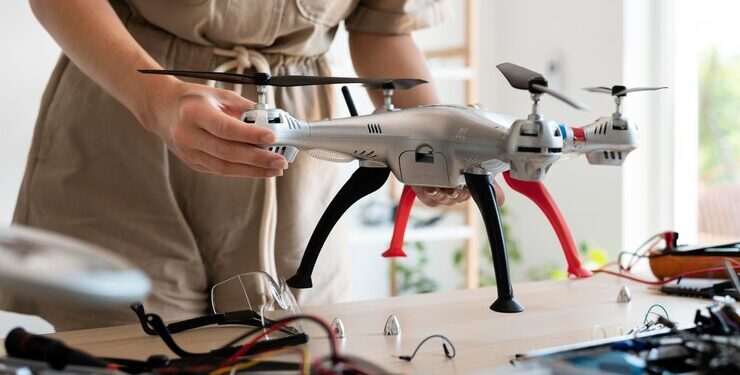Introduction
Drones, also known as Unmanned Aerial Vehicles (UAVs), have rapidly become a ubiquitous part of our modern world. These versatile flying machines serve a myriad of purposes, from capturing stunning aerial footage to facilitating search and rescue missions. But have you ever wondered how these marvels of technology are manufactured? In this article, we’ll delve into the fascinating process of manufacturing drones, exploring the components, assembly, quality control, and the challenges faced by manufacturers.
The Basics of Drone Manufacturing
Manufacturing drones is a complex process that combines cutting-edge technology, precise engineering, and meticulous craftsmanship. It begins with the design and development of the drone’s components, followed by assembly, quality control, and testing to ensure that the final product meets the highest standards.
Design and Development
The journey of manufacturing a drone starts with designing its components, including the frame, motors, flight controller, and various sensors. These components are designed to be lightweight yet sturdy, ensuring the drone can withstand the rigors of flight. Aerodynamics play a crucial role in drone design, as it directly affects stability and maneuverability.
Once the designs are finalized, prototypes are created and subjected to rigorous testing to ensure they perform as expected. Any necessary adjustments are made to enhance the drone’s performance and reliability.
Component Manufacturing
Each component of a drone is manufactured with precision. Here are some key components and their manufacturing processes:
Frame: Drone frames are often made from lightweight materials like carbon fiber or aluminum. These materials are CNC (Computer Numerical Control) machined to create the intricate shapes and structures needed for the drone’s body.
Motors and Propellers: Drone motors are typically brushless and are manufactured with precision to ensure they operate efficiently. Propellers, made from various materials like plastic or carbon fiber, are also carefully designed and manufactured to provide the necessary thrust.
Electronics: The drone’s electronic components, including the flight controller, GPS modules, and sensors, are assembled with great care. Surface-mount technology is commonly used to create compact and efficient electronic circuits.
Camera and Gimbal: If the drone is equipped with a camera and gimbal for aerial photography or videography, these components are carefully manufactured and calibrated for optimal performance. Making a video with a drone helps in developing your awesome shots.
Assembly and Quality Control
The assembly of a drone involves the integration of all its components. Skilled technicians meticulously put together the frame, motors, electronics, and other parts. Care is taken to ensure that all connections are secure, and components are properly calibrated.
Quality control is a critical aspect of drone manufacturing. To ensure that each drone meets the highest standards, various tests and checks are conducted. These may include:
Functional Testing: The drone is powered on and all its functions are tested to ensure they work correctly.
Flight Testing: Drones may undergo flight tests to verify their stability, control, and overall performance.
Camera Calibration: If the drone is equipped with a camera and gimbal, they are calibrated to ensure that they capture high-quality images and videos.
Durability Testing: Some drones are subjected to durability tests, including impact and water resistance assessments.
Battery Testing: Drone batteries are tested to ensure they provide consistent and reliable power during flight.
Challenges in Drone Manufacturing
Manufacturing drones presents several challenges, including:
Regulatory Compliance: Drone manufacturers must adhere to stringent aviation regulations and safety standards set by aviation authorities worldwide.
Miniaturization: Many drone components must be miniaturized to fit within the compact design, which can be technically challenging.
Battery Technology: Developing lightweight, high-capacity drone batteries is an ongoing challenge to extend flight times.
Materials Selection: Choosing the right materials for drone components is crucial to ensure a balance between weight, durability, and cost.
Conclusion
Manufacturing drones is a complex yet fascinating process that involves a meticulous combination of design, precision engineering, and quality control. Each component is carefully crafted to ensure reliability and optimal performance. While challenges such as regulatory compliance and miniaturization persist, the world of drone manufacturing continues to evolve as technology advances. As the demand for drones in various industries grows, manufacturers will play an essential role in meeting these demands while maintaining the highest standards of quality and innovation in the UAV market.
Also Read Interesting Articles At: Tech New Master.


















